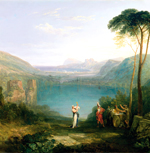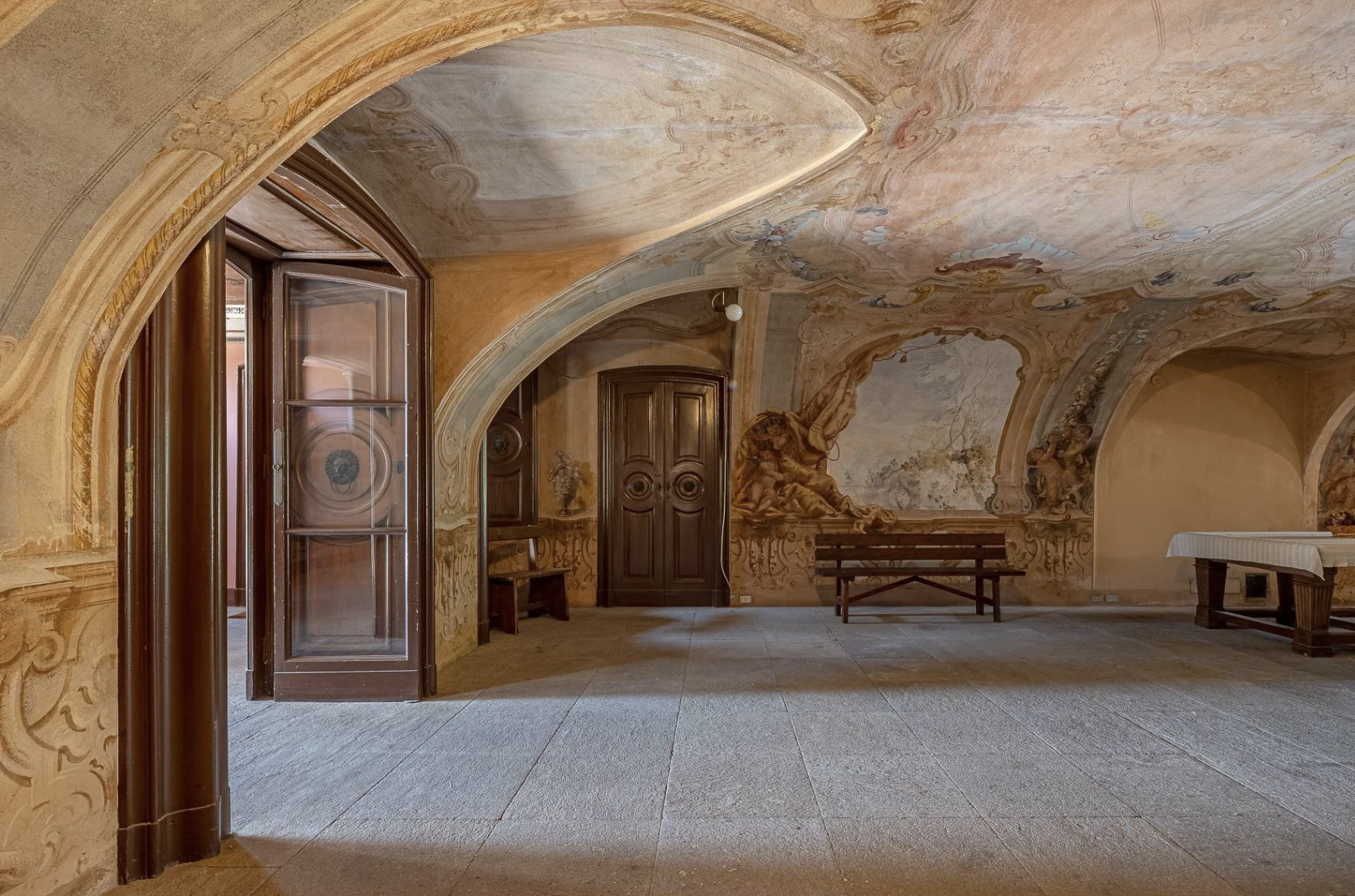Turner and Italy at the National Galleries of Scotland
This new exhibition charts Turner’s love for Italy and the incredible work he produced as a result of the time he spent in many parts of the country


It was Claude Lorrain who reduced J. M. W. Turner to tears. Not the man himself, who died almost a century before Turner’s birth, but one of his paintings, which belonged to banker-collector John Julius Angerstein. In response to Angerstein’s enquiry into the cause of Turner’s tears, the latter reportedly exclaimed: ‘Because I shall never be able to paint anything like that picture.’
But within a matter of years, Turner had proved himself wrong. Included in an exhibition opening this week at the National Galleries of Scotland is a heroic Claude-inspired landscape complete with Classical ruins, limpid pools, white-gold sunlight and a craggy horizon. In Lake Avernus: Aeneas and the Cumaean Sibyl, of 1814–15, the partly self-taught barber’s son from Covent Garden paid homage to the earlier master in a vision of sweeping grandeur irradiated with the warmth and drama of the untamed south.
The exhibition ‘Turner and Italy’ is a visual souvenir of a love story. Turner had most likely fallen in love with Italy before his first visit in 1802, at the age of 27. A child prodigy, he was accepted as a student at the Royal Academy Schools when he was only 14. There he encountered works by Canaletto, Richard Wilson, De Loutherbourg and John Robert Cozens, in addition to the paintings of Lorrain. These artists were beguiled by and, in turn, beguiled others with their depictions of a country remote from the dark scars of Britain’s emergent Industrial Revolution embraced by the sun and coloured by the majesty of a Classical past still celebrated throughout the civilised world.
This was the country Turner discovered for himself in 1802, and to which he would return on six further occasions. His visit to Rome in 1819 also took in Turin, Milan, Venice, the Lakes, Bologna, Ancona, Spoleto, Narni, Naples, Sorrento, Amalfi, Paestum and Florence. Although he would afterwards describe Rome as the ‘Land of all Bliss’ and made protracted stays in Venice, his enthusiasm for Italy as his sketchbooks show embraced the whole country.
The experience of Italy didn’t revolutionise Turner’s art. Rather, it imbued his work with that ‘Grand Manner’ so valued by Reynolds, whose influence dominated the Academy Schools throughout Turner’s studenthood. It also awakened in Turner insights into the transforming power of light and colour, which would afterwards play central roles in his development both as artist-practitioner and Romantic visionary. The relationship of light and colour, as much as topography or architecture, is the concern of paintings such as Florence from San Miniato of 1827 and Modern Rome Campo Vaccino (1839).
Perhaps these were included among the paintings seen in Turner’s house by Lady Trevelyan the year after the artist’s death: ‘Among bits of furniture thick with dust… brilliant pictures all glowing with sunshine and colour.’ Her description would equally have applied to Approach to Venice, a sun-drenched meditation in which land and lagoon are bathed in the same diamantine light. In all three paintings, that light is the glow of a great artist’s enduring affection for the country that inspired him.
‘Turner and Italy’ is at the National Galleries of Scotland, Edinburgh, from March 27 until June 7 (0131–624 6200; www.nationalgalleries.org)
Exquisite houses, the beauty of Nature, and how to get the most from your life, straight to your inbox.
Country Life is unlike any other magazine: the only glossy weekly on the newsstand and the only magazine that has been guest-edited by His Majesty The King not once, but twice. It is a celebration of modern rural life and all its diverse joys and pleasures — that was first published in Queen Victoria's Diamond Jubilee year. Our eclectic mixture of witty and informative content — from the most up-to-date property news and commentary and a coveted glimpse inside some of the UK's best houses and gardens, to gardening, the arts and interior design, written by experts in their field — still cannot be found in print or online, anywhere else.
-
 Dream of revolution inside the 18th-century villa once occupied by Napoleon's French troops
Dream of revolution inside the 18th-century villa once occupied by Napoleon's French troopsAn apartment inside historic Villa Gnecchi Ruscone is on the market and it comes with a grand ballroom rumoured to have been frequented by Napoleon.
-
 Get ready to get spooky in the Halloween edition of the Country Life Quiz of the Day, October 31, 2025
Get ready to get spooky in the Halloween edition of the Country Life Quiz of the Day, October 31, 2025Ghosts, ghouls and ghastly questions lurk in today's quivering quiz.
